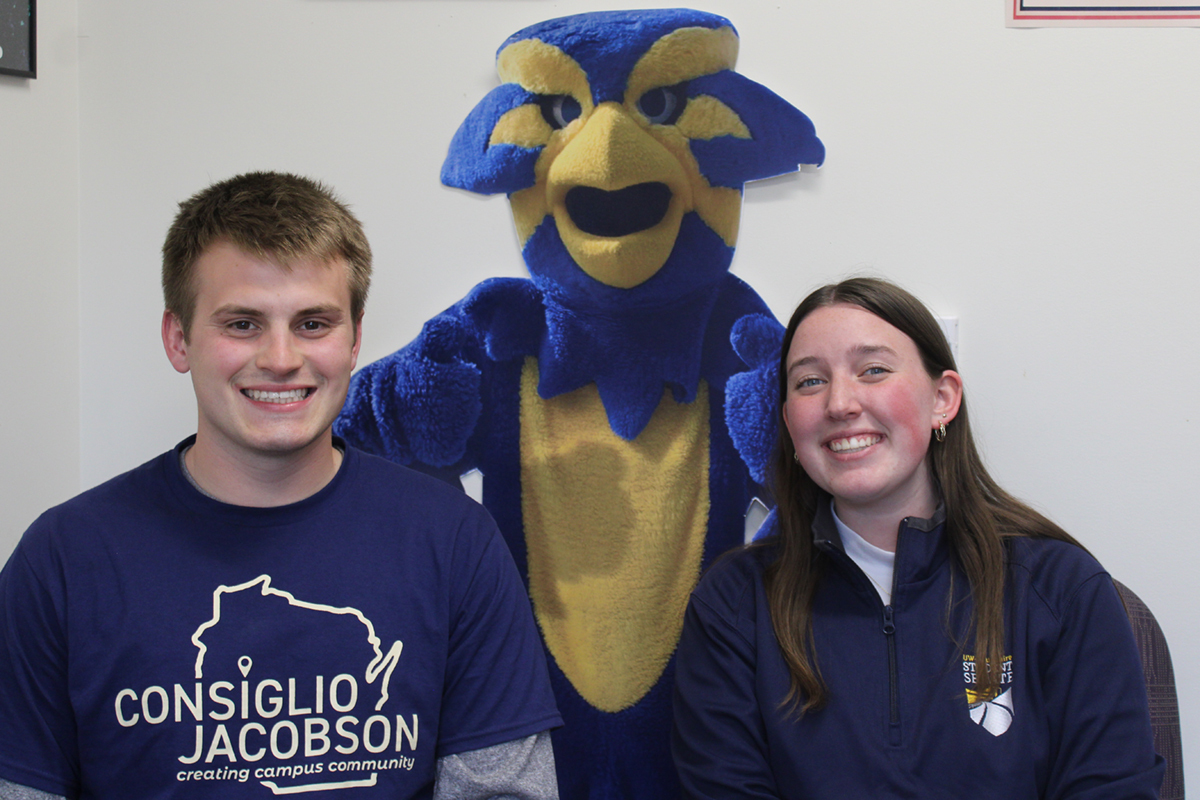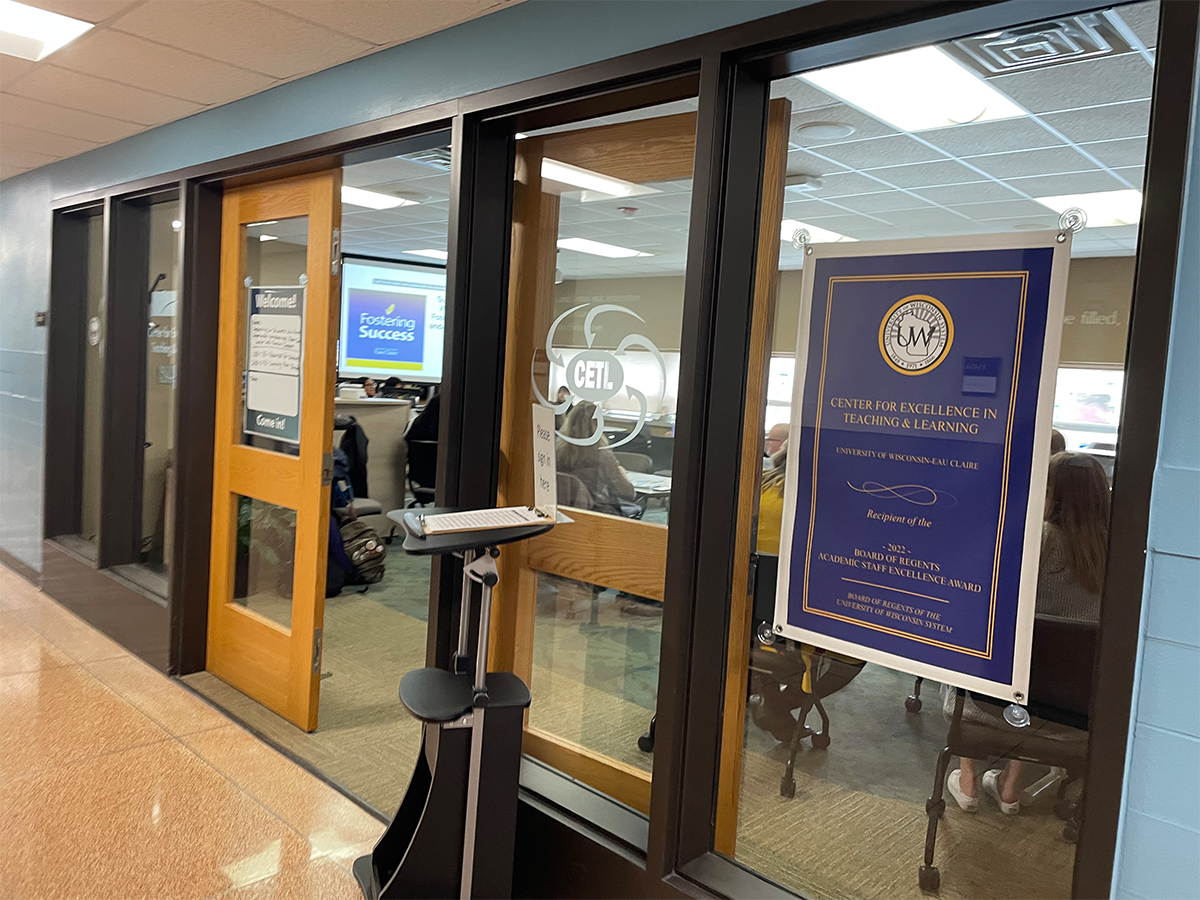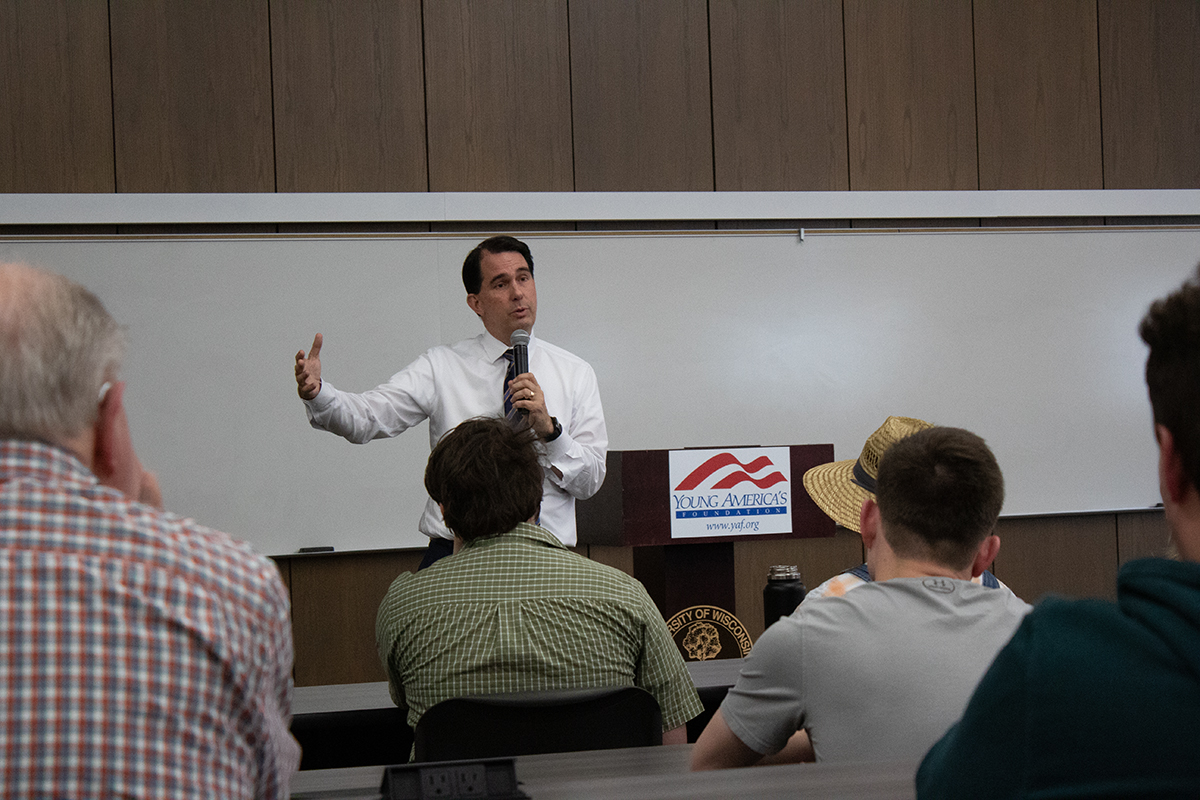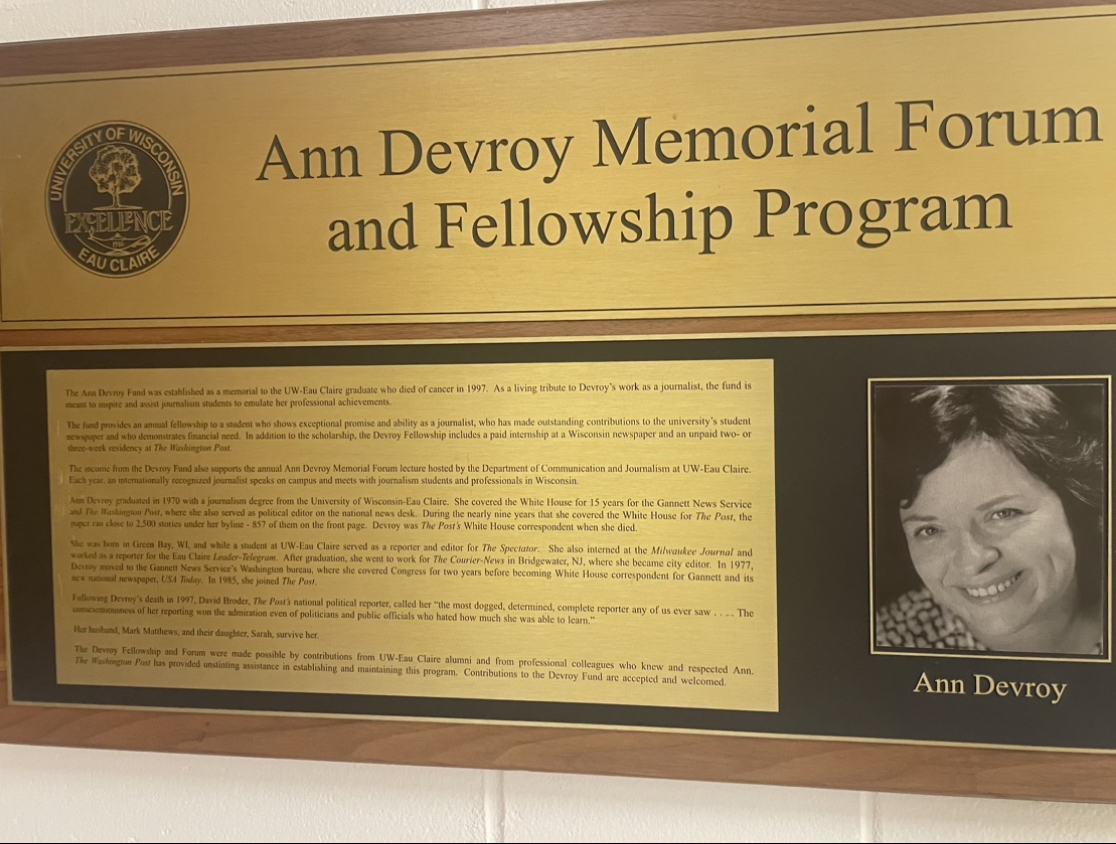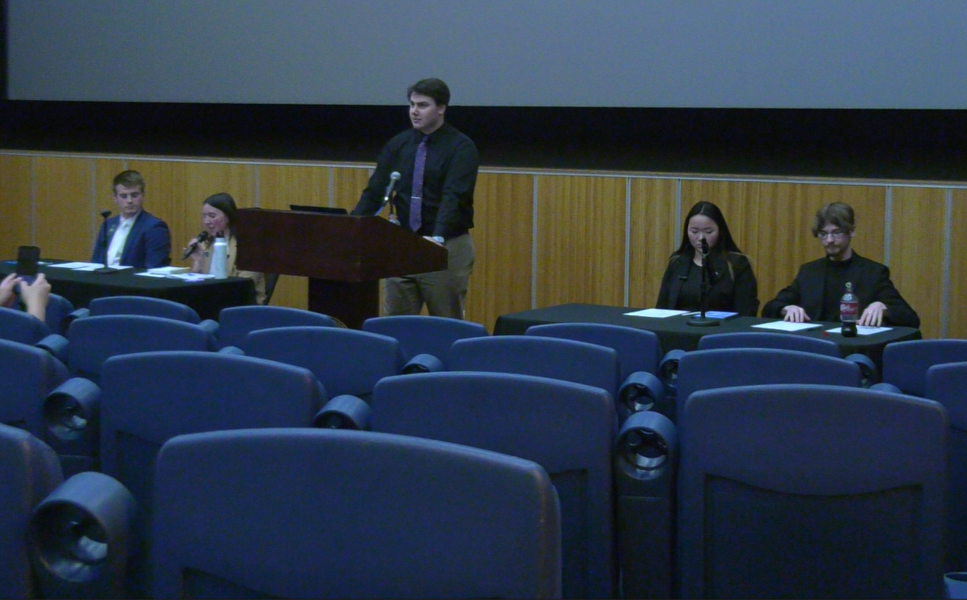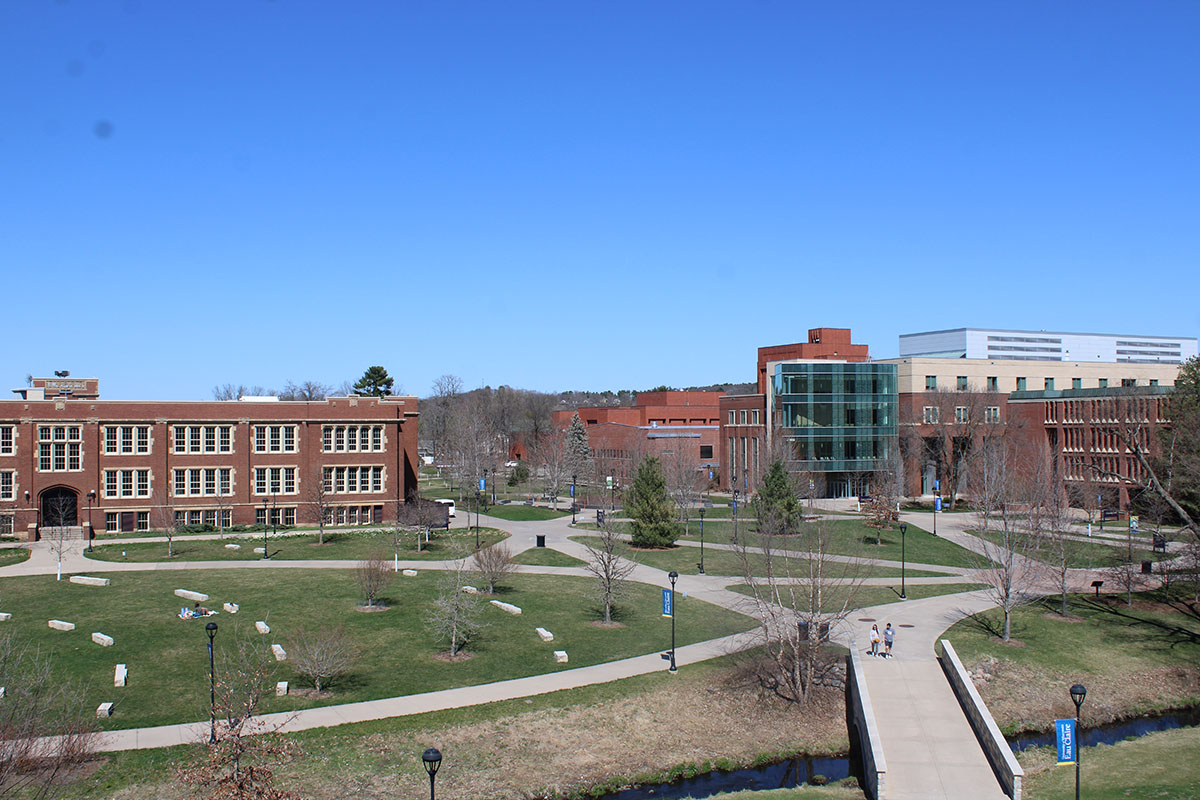A new science building, a new performing arts center, an off-campus arena and five new residence halls were just some of the many changes proposed in the UW-Eau Claire Campus Master Plan presented at a University Senate meeting Tuesday.
John Hoffman, a representative of JJR Architects, the firm in charge of the UW-Eau Claire Campus Master Plan, showed overhead and ground view sketches of their ideas for university development in the next 20 years, focusing on connecting the three separate facets of campus: upper, lower and Water Street.
One of the greatest impacts to lower campus would come with moving the science departments to a new building constructed where Katherine Thomas Hall and Putnam Hall now stand, overlooking the Chippewa River. Hoffman said the plans focused on incorporating the river into the campus dynamic.
“The artist’s sketch of the proposed science building was enticing,” said Phil Ihinger, the University Senate representative from the geology department, in an e-mail to The Spectator. “I hope the mindset of opening up to the river front, rather than looking away from it, will be adopted … throughout the city of Eau Claire.”
Along with the new science center, JJR’s proposal suggested turning Garfield Avenue into a pedestrian-only street, with the exception of emergency vehicles and public transit, such as Eau Claire city buses or a university-run bus line. This would allow for riverside overlooks and a closer connection between upper and lower campus, Hoffman said.
Later in the plan, JJR suggested the removal of Zorn Arena and proposed moving the space to an off-campus location, possibly in collaboration with the city.
Most of the changes to lower campus are intended to open up the space, Hoffman said. The new Davies Center will allow for an open face to McIntyre off of the campus mall and taking vehicular traffic off Garfield will move parking lots to the outskirts of campus.
Across the river from the possible new science building, the Haas Fine Arts Center would also undergo renovations and possibly an extension that would allow the art and design program to accommodate more students.
JJR’s proposal also included a new building across Water Street from Haas that would serve as a performing arts center and exhibition space.
Jill Olm, the University Senate representative to the art and design department, said the department has been in need of an expansion to Haas for a long time.
“It’s less about logistical change and more about ideological,” Olm said.
By having more and larger classrooms, Olm said the art and design department could incorporate more non-majors and improve the connection to the rest of campus. Olm also said she hopes sharing a new building would increase the relationship between the visual and performing arts, who are sectioned off by a hallway in the current Haas building.
Up the hill, Hoffman said the Campus Master Plan hopes to take students out of the hotels and make the current residence halls less crowded. The plan calls for up to five new residence halls, including structures in Towers Field and where the tennis courts currently stand. The plan also called for Horan to be replaced with a larger residence hall that included dining facilities.
Alan Gengenbach, a University senator representing the chemistry department, said he had no qualms with the design or ideas of JJR’s proposal, but wasn’t sure if it was fiscally possible. A similar question was posed at the end of the meeting.
Hoffman said although details on financing and phasing were not available yet, the changes in the proposed plan were made with finances in mind.
“I’ll be the first to say that there are academic needs …that aren’t being fully met with these (new) academic buildings on campus,” Hoffman said. “But these are the most likely number of academic buildings within the 20 years of this master plan.”
The next step for the Campus Master Plan will be a final plan that will be presented to University Senate in January or February.
Student Response
With the UW-Eau Claire Campus Master Plan taking shape, some students have their own opinions on what buildings need renovations.
“I spend most of my time in Phillips (Hall),” said Dan
Hanson, a senior microbiology major. “The rooms are certainly a bit outdated.” Hanson also said he was glad to see the new building coming soon.
Matthew Nelson, a senior marketing major, said he believes Zorn Arena is too small for the university’s uses, especially graduation.
“It would be nice to see a little room (in Zorn) so people aren’t struggling to have to get graduation tickets,” Nelson said.
Nelson, who has most his classes in Schofield, said he is satisfied with the classroom sizes of the building.
Freshman Katelyn Meinholz said she has no qualms with academic buildings on campus, but admits the residence halls can seem crowded.
“When you have ninety-plus people sharing five showers it can get kind of crazy,” she said. “But it all works out.”

